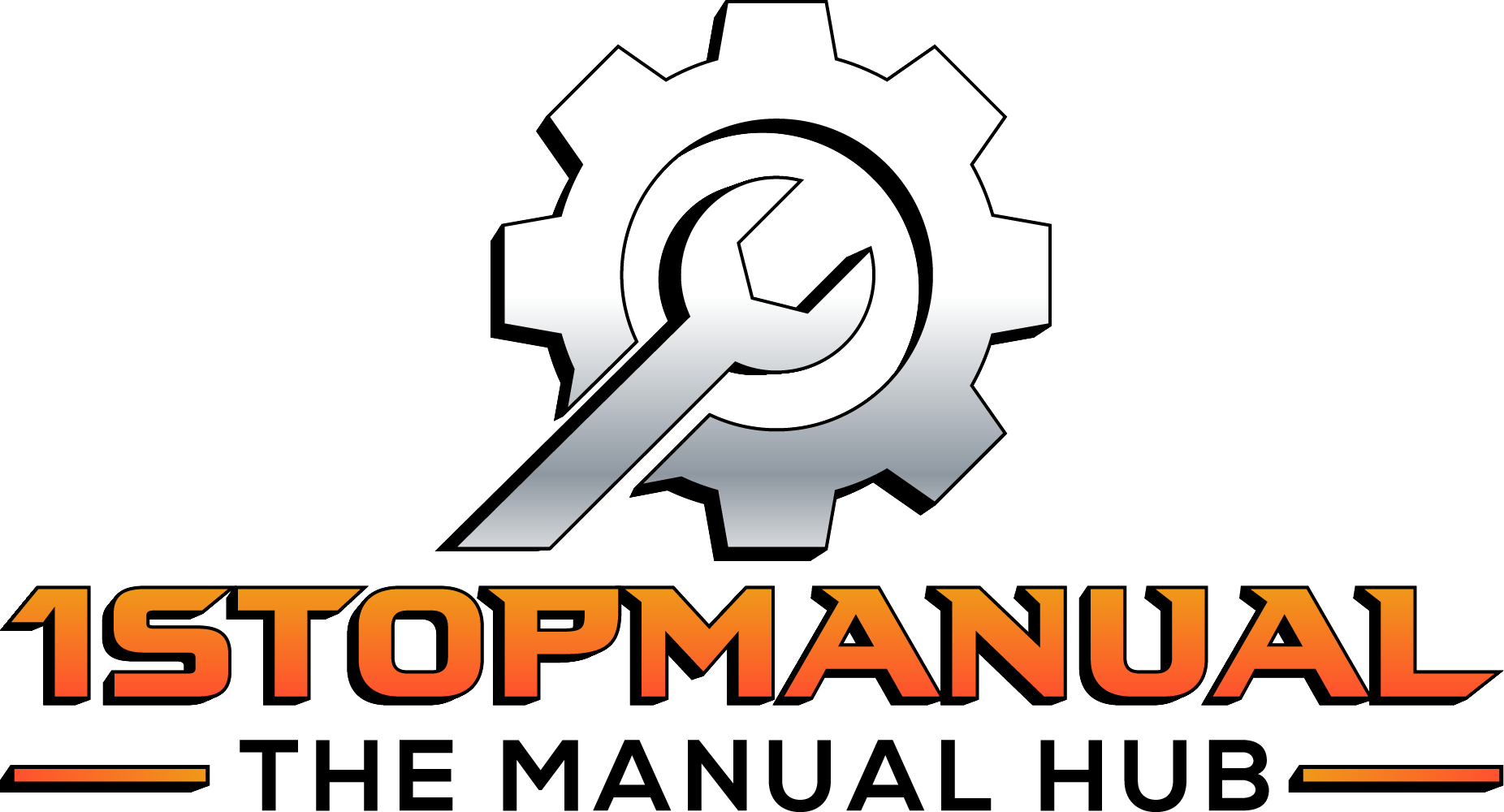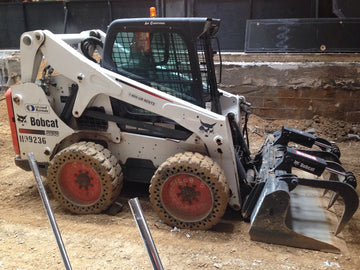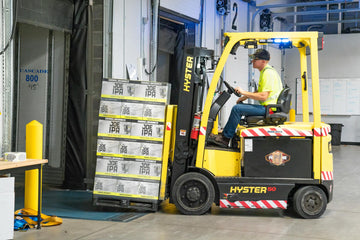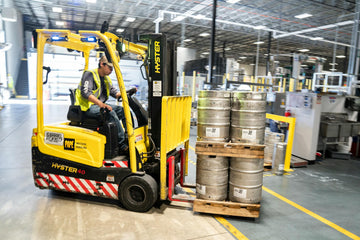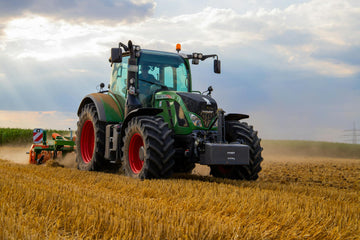Skid steer loaders are powerful machines that help with digging, lifting, and moving heavy materials. It is used a lot in construction, farming, and landscaping. These machines are small but can do big jobs. Because they are so useful, many people rely on them every day.
But like any machine, skid steers can have problems. Sometimes they stop working, break down, or don’t work as well as they should. When this happens, it can slow down your work and cost a lot to fix. Some repairs can be very expensive and cost like thousands if you call a mechanic or take it to a repair shop.
The good news is that many common problems with skid steers can be fixed by you. With the right tools and a little know-how, you can save time and money by doing the repairs yourself.
We, at 1StopManual are here to help you. We provide Service manuals, Wiring diagrams, Parts Manuals, and more with free knowlege to help you get your skid steer back in action.
In this blog, we will talk about the 7 most common problems people face with skid steer loaders and how to fix them.
Let’s get started!

Tools You May Need to Fix Common Skid Steer Problems
The right tools can make fixing your skid steer loader much easier. Here’s a list of tools to keep your machine running smoothly:
1. Basic Hand Tools:
- Wrenches (adjustable and socket set)
- Screwdrivers (flathead and Phillips)
- Pliers (regular and needle-nose)
- Allen wrench set
2. Hydraulic Tools (If Needed):
- Hydraulic fluid and funnel
- Hydraulic hose repair kit
- Seal puller and installer
3. Electrical Tools (If Needed):
- Multimeter (for testing batteries and circuits)
- Wire cutters and strippers
- Battery terminal cleaner
- Fuse puller and replacement fuses
4. Diagnostic Tools (If Needed):
- Engine code reader
- Pressure gauge (for hydraulics)
- Infrared thermometer (for checking overheating)
5. Lifting and Support Tools (If Needed):
- Jack and Jack stands
- Wheel chocks
- Heavy-duty gloves
6. Fuel System Tools (If Needed):
- Fuel line disconnect tool
- Fuel filter wrench
- Drain pan (for fuel and oil)
7. Tire and Track Tools (If Needed):
- Tire pressure gauge
- Track tensioning tool
- Lubricant and grease gun
8. Replacement Parts and Fluids (If Needed):
- Hydraulic fluid
- Engine oil
- Replacement filters (air, fuel, and hydraulic)
- Spare hoses and belts
8 Common Skid Steer Loader Problems and How to Fix Them
1. Skid Steer Won't Start
A skid steer that won’t start can stop your work right away. This can be frustrating, but don’t worry! Let’s figure out why it’s not starting and how to fix it.
Symptoms:
- The engine doesn’t turn on when you turn the key.
- You hear clicking, but nothing happens.
- The lights on the dashboard are dim or don’t turn on.
Cause of the Problem:
- Dead or weak battery – If the battery is old or not charged, the skid steer won’t start.
- Loose or dirty battery connections – Dirt or loose wires can stop power from reaching the engine.
- Bad starter motor – If the starter motor is damaged, it can’t turn the engine on.
- Fuel problems – If there’s not enough fuel or the fuel is dirty, the engine won’t start.
Solution:
- Check the battery – Use a battery tester to see if the battery is charged. If not, charge it or replace it.
- Clean the battery terminals – Make sure the battery cables are tight and clean off any dirt or rust.
- Check the fuel – Make sure the tank is full and the fuel is clean. Replace old fuel if needed.
- Inspect the starter motor – If the starter is not working, you may need to replace it.
- Try jump-starting – Use another vehicle or battery to jump-start the skid steer. If it starts, the battery may need to be replaced.

2. Hydraulic System Issues
Hydraulic problems can make your skid steer slow or weak. This can make it hard to lift or move heavy loads.
Symptoms:
- The loader arms move slowly or don’t move at all.
- The skid steer feels weak and can’t lift heavy things.
- You see fluid leaking under the machine.
- The machine makes strange noises when you try to lift.
Cause of the Problem:
- Low hydraulic fluid – If there isn’t enough fluid, the system won’t work properly.
- Clogged hydraulic filters – Dirty filters can stop the fluid from moving.
- Leaking hoses – If the hoses are damaged, hydraulic fluid will leak out.
- Worn-out pump – The hydraulic pump may be old or damaged.
Solution:
- Check the hydraulic fluid – Look at the fluid level and add more if needed.
- Inspect for leaks – Check hoses and connections for leaks. Replace any damaged hoses.
- Replace filters – If the filters are dirty or clogged, replace them with new ones.
- Test the pump – If the pump isn’t working, you might need to replace or rebuild it.
3. Engine Overheating
If your skid steer’s engine gets too hot, it can stop working and cause damage. This is a common problem, especially in hot weather.
Symptoms:
- The engine temperature gauge shows the engine is too hot.
- Steam or smoke comes from the engine.
- The engine shuts off by itself.
- You hear loud hissing or boiling noises.
Cause of the Problem:
- Low coolant – Without enough coolant, the engine will overheat.
- Dirty radiator – If the radiator is dirty or clogged, it can’t cool the engine.
- Broken fan belt – A broken belt won’t let the fan cool the engine.
- Leaking coolant – If the coolant leaks, the engine won’t stay cool.
Solution:
- Check the coolant – Make sure there is enough coolant. If not, add more.
- Clean the radiator – Use a brush or air to clean dirt and dust from the radiator.
- Inspect for leaks – Look for leaks in the radiator or hoses. Replace any leaking parts.
- Replace the fan belt – If the belt is broken, replace it with a new one.
4. Weak or No Lift
If your skid steer’s arms won’t lift or feel weak, it can slow down your work. This can make it hard to load materials or move things around.
Symptoms:
- The loader arms lift slowly or not at all.
- The bucket feels heavy and hard to move.
- The skid steer struggles to carry heavy loads.
Cause of the Problem:
- Low hydraulic fluid – Without enough fluid, the lift system won’t work well.
- Worn-out hydraulic cylinders – The parts that help lift the arms may be leaking or damaged.
- Faulty control valves – The control valves might not open or close properly.
- Leaking hoses – Fluid leaks can stop the loader from lifting properly.
Solution:
- Check the hydraulic fluid – Look at the fluid level and add more if needed. Use the right type of hydraulic fluid for your machine.
- Inspect the hydraulic cylinders – Look for leaks or damage around the cylinders. If they leak, you may need to replace the seals or the whole cylinder.
- Examine the control valves – If the loader isn’t responding when you push the controls, the valves might be stuck or broken. Replace them if needed.
- Look for leaks – Check all hoses and connections for leaks. Replace any damaged hoses.
5. Electrical Failures
Electrical problems can stop the skid steer from working or cause it to shut down unexpectedly. This can be frustrating and stop your work.
Symptoms:
- The skid steer won’t start.
- The lights are dim or flickering.
- The engine shuts off while working.
- The control panel doesn’t light up.
Cause of the Problem:
- Dead battery – The battery might not have enough power.
- Loose or corroded wires – Dirty or loose wires can stop electricity from flowing.
- Bad alternator – The alternator charges the battery. If it’s broken, the battery won’t stay charged.
- Blown fuses – A fuse can blow if there’s a short circuit.
Solution:
- Check the battery – Use a tester to see if the battery is fully charged. Replace or charge it if it’s low.
- Clean and tighten connections – Look at the battery terminals and wires. Clean off any dirt or rust and tighten loose wires.
- Inspect the alternator – If the battery keeps dying, the alternator might be broken. Replace it if needed.
- Check the fuses – Look at the fuse box. Replace any blown fuses with new ones of the same size.
- Test the lights – If the lights flicker, there may be loose wires. Tighten or replace them.
6. Track/Tire Problems
If the skid steer’s tires or tracks are damaged, it can affect how the machine moves. This can make the skid steer harder to steer or cause it to slip.
Symptoms:
- The skid steer feels unbalanced.
- The tracks slip or come off.
- The tires look flat or worn down.
- The machine loses traction and spins.
Cause of the Problem:
- Low tire pressure – Tires that aren’t full can make the skid steer hard to steer.
- Worn-out tracks or tires – Old tracks or tires lose their grip and can slip.
- Loose tracks – If the tracks aren’t tight enough, they can slip off.
- Damaged wheels – Cracks or dents in the wheels can make the tires wear down faster.
Solution:
- Check tire pressure – Use a tire gauge to check the pressure. Add air if the tires are too low.
- Inspect the tracks – Look for cracks, tears, or loose tracks. Tighten or replace them if they are worn.
- Replace old tires – If the tires are worn or cracked, replace them with new ones that match your machine.
- Tighten loose tracks – If the tracks are slipping, tighten them according to the manual’s instructions.
- Check the wheels – Look at the wheels for cracks or damage. Replace damaged wheels to prevent further tire issues.
7. Control Malfunctions
If the controls on your skid steer don’t work right, it can make the machine hard to use or unsafe.
Symptoms:
- The loader arms or bucket move slowly or jerk around.
- The machine doesn’t respond when you use the joystick or pedals.
- Controls feel stiff or loose.
- The skid steer moves in the wrong direction.
Cause of the Problem:
- Hydraulic control failure – If the hydraulic fluid is low or the control valves are stuck, the controls won’t work properly.
- Loose or broken cables – If the cables connecting the controls to the machine are damaged, the skid steer won’t respond correctly.
- Electronic sensor issues – Some skid steers have sensors that control movement. If a sensor fails, the controls can malfunction.
- Worn-out joystick or pedals – Over time, the joystick or pedals may wear down.
Solution:
- Check the hydraulic fluid – Low fluid can cause slow or jerky movement. Add more if needed.
- Inspect the cables – Look for loose or broken cables. Tighten or replace them if necessary.
- Test the sensors – If your machine has sensors, check for error codes and replace any faulty sensors.
- Replace worn controls – If the joystick or pedals are worn out, replace them with new ones.
8. Fuel System Issues
Fuel problems can stop the engine or make the skid steer run poorly.
Symptoms:
- The engine sputters or won’t start.
- The machine loses power during work.
- There’s a strong smell of fuel.
- The fuel tank leaks.
Cause of the Problem:
- Dirty fuel filter – A clogged filter can stop fuel from reaching the engine.
- Bad fuel pump – If the pump fails, the engine won’t get enough fuel.
- Water in the fuel – Water can mix with fuel and make the engine run poorly.
- Fuel line leaks – Leaks can cause fuel to drip out and reduce engine power.
Solution:
- Replace the fuel filter – If the filter is dirty, install a new one. This is an easy and affordable fix.
- Check the fuel pump – If the engine isn’t getting enough fuel, the pump may need to be replaced.
- Drain water from the fuel tank – If you suspect water in the fuel, drain the tank and refill it with clean fuel.
- Inspect for leaks – Look at the fuel lines for cracks or damage. Replace any leaking lines.

Keep Your Skid Steer Running with 1StopManual
At 1stopmanual.com, we know your skid steer is a big thing for your work. That’s why we offer a wide range of manuals, and knowledge to help you fix these problems quickly and easily.
Don’t let small issues slow you down – visit our store today and keep your skid steer running!
Conclusion
Thank you for reading this blog all the way to the end!
Keeping your skid steer in good shape doesn’t have to be hard. Fix the small issues like replacing filters, adding fluid, or tightening loose parts by yourself.
If you have any questions or need help finding the right manual, feel free to contact us anytime via the Live Chat feature. And don’t forget to share this blog with anyone who might need it.
See you next time!
